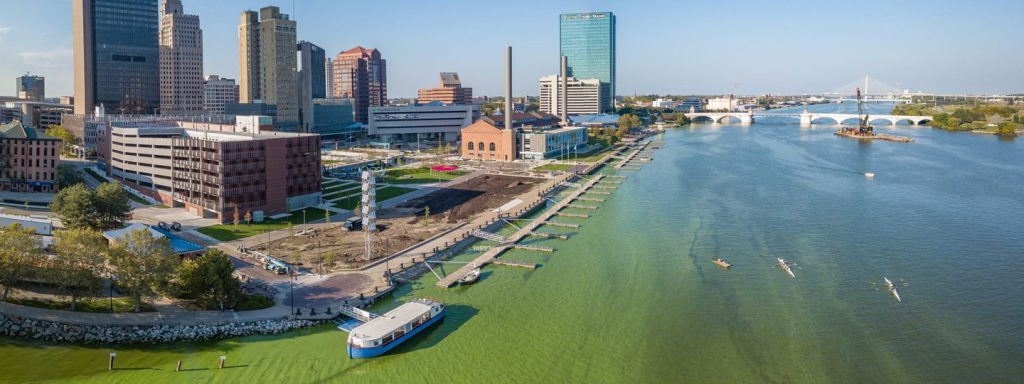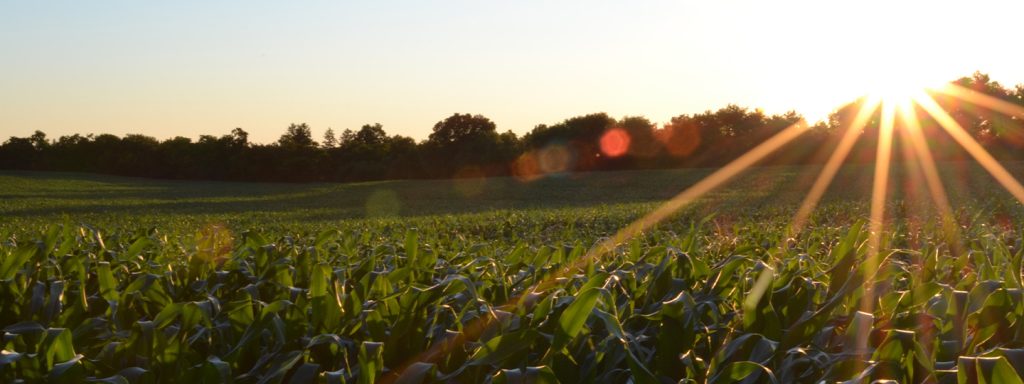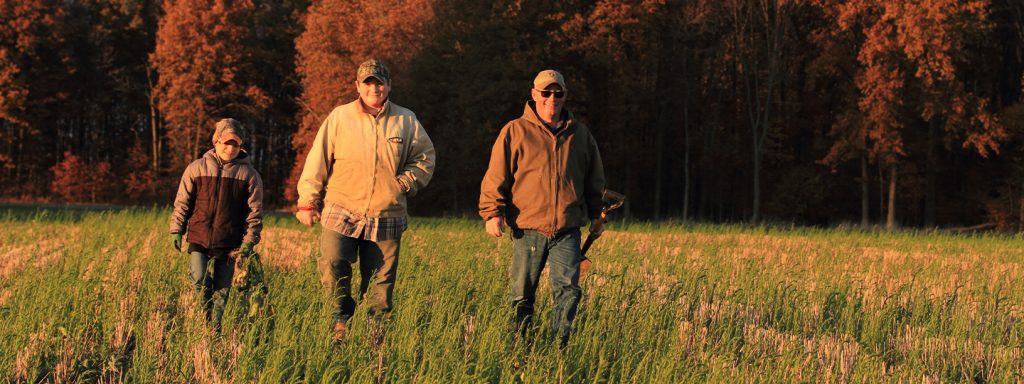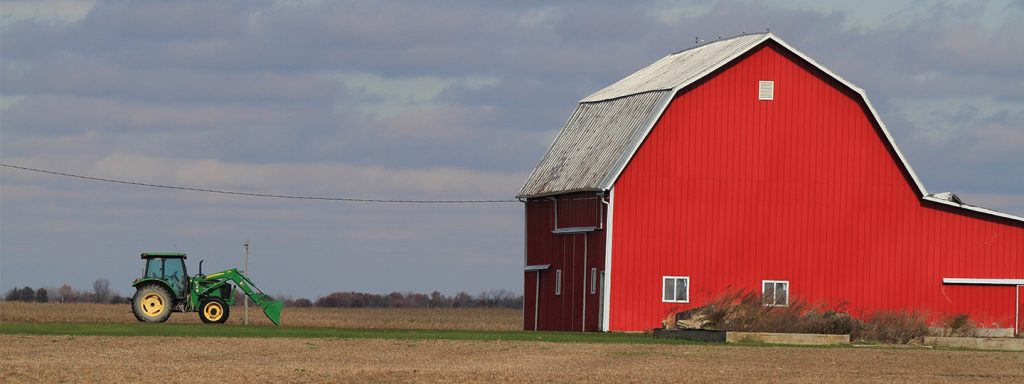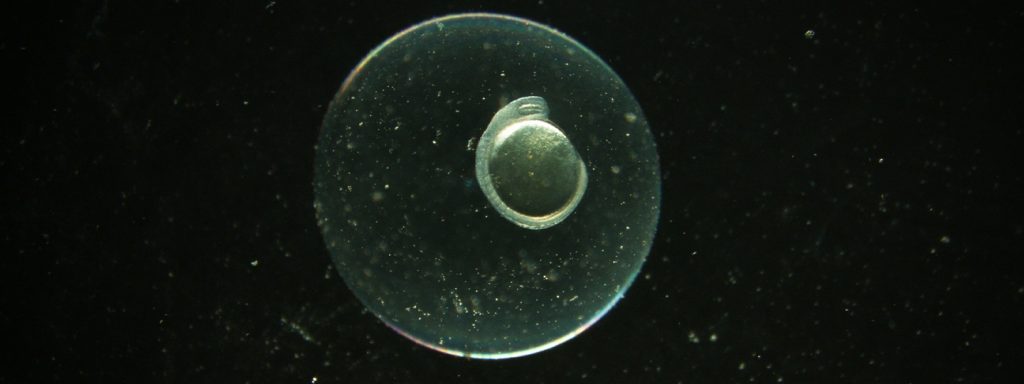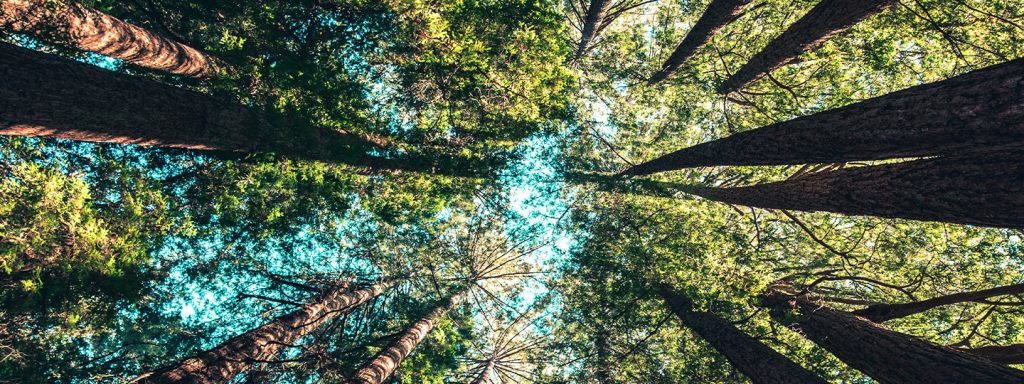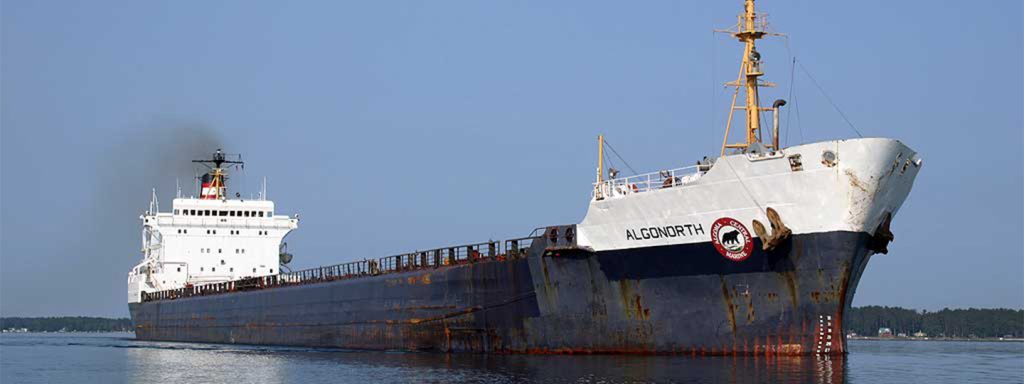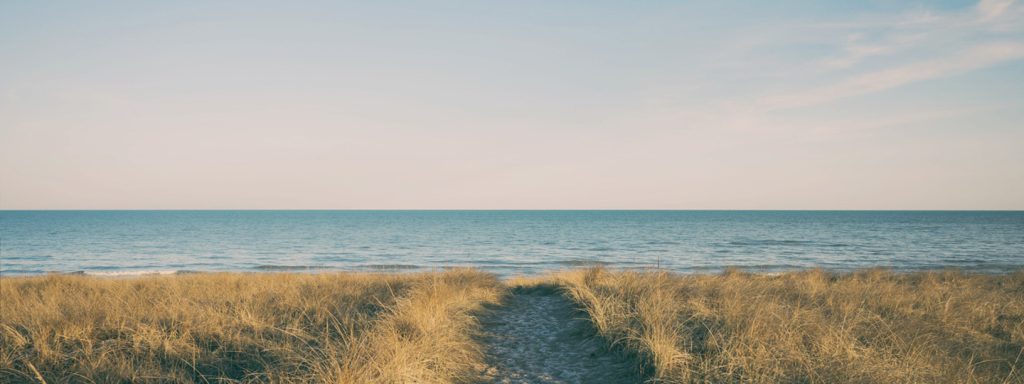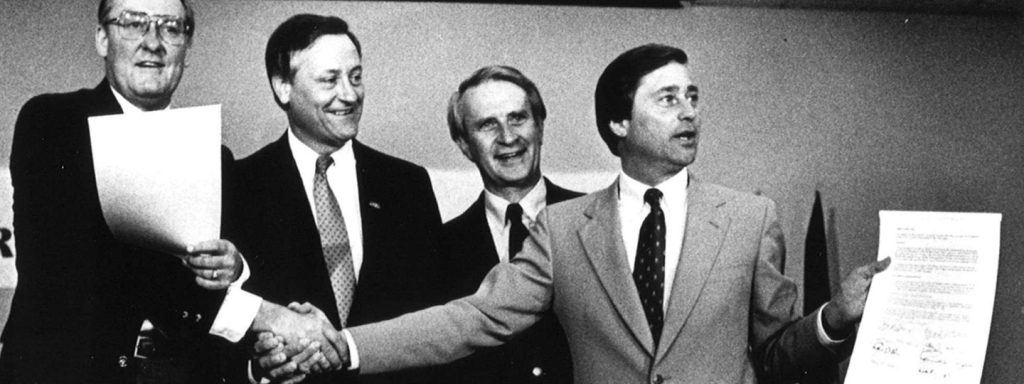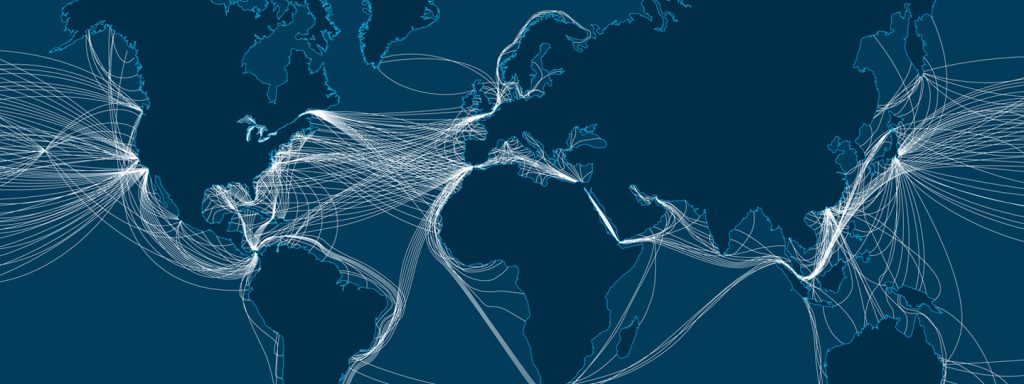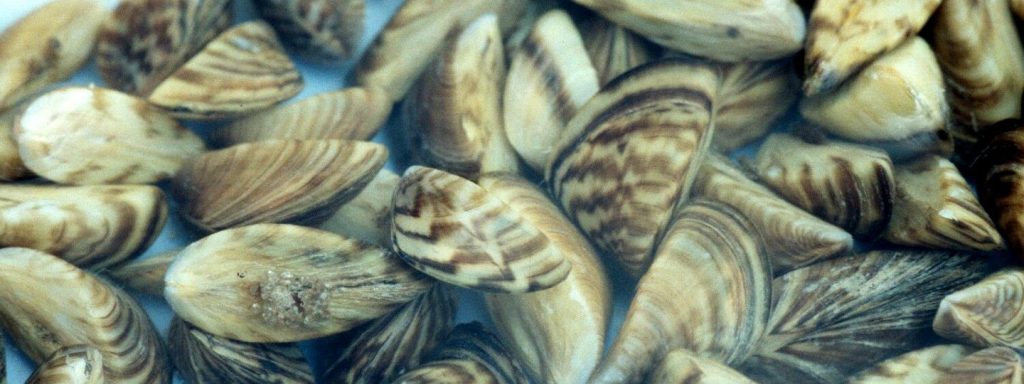
Impact Stories
Developing a Toolbox to Reduce Dissolved Reactive Phosphorus from Farms
Sounding the Alarm on Dissolved Reactive Phosphorus Nothing makes headlines like residents who are told not to drink the water from their taps. The Toledo water crisis in 2014 and the “Lake Erie is Dead” declaration in the 1960s are of the same problem—too many nutrients in the water. Nutrients like phosphorous, commonly used to…
BMP Challenge – A Financial Safety Net for Farmers to Adopt Great Lakes-friendly Practices
Stopped Thousands of Pounds of Nitrogen from Entering the Lakes In 2002, the Great Lakes Protection Fund organized a team of insurers, farm operators, farm advisors and federal and state farm agencies to develop warranty products to protect farmers against financial losses that might result from adopting new best management practices. From this effort, the…
Vacant to Vibrant: Stormwater Solutions that Fight Urban Blight
Prototyping Great Lakes—Friendly Neighborhoods of the Future In recent decades, cities across the Great Lakes region have been hit with the triple threat of heavier precipitation, aging infrastructure, and weak economies. The infrastructure in many cities needs costly investment and affordable solutions are in high-demand as communities struggle with stagnant economies and slow-growing, or even…
The Power of Perception: Helping Farmers Leave a Legacy of Healthy Land
Promoting Agricultural Innovation to Improve Water Quality Lake Erie has made an impressive comeback since the 1960s when some parts were declared dead from industrial pollutants. Eleven million people, from Toledo to Cleveland to Buffalo, depend on Lake Erie for their drinking water, and the lake supports a rich ecosystem. Now agriculture, not industry, threatens its shores. …
Agricultural Retailers Implement Great Lakes-Friendly Business Model
Keeping Millions of Pounds of Phosphorus from Entering the Lakes A Note from Fund StaffThe Partnership for Ag Resource Management (PARM) started as an ambitious idea to prove that agricultural (ag) retailers could make a profit selling products and services that improve water quality. It has become a regional network that empowers ag retailers as a valuable…
Beyond Ballast Water: The Great Lakes’ Role in Early Applications of Environmental DNA Techniques
Preventing New Invasions: Genetic Tools as an Early Warning System Since the mid-1990s, the Great Lakes Protection Fund had been seeking ways to stop new invasions of non-native species. The Fund had made headway in developing ballast water treatment systems, but vessel operators and authorities had no way of knowing what was living in the…
A New Era in Sustainable Forestry Management
44 Million Acres of Forests Managed Sustainably Since the early investments made by the Great Lakes Protection Fund in sustainable forestry, the Great Lakes states have collectively led the way in growing certified forests in the United States. Today, 116 million acres of U.S. forestlands are sustainably certified. Forty-four million of those acres (38%) are located in the…
The First Installation of Ballast Water Treatment Technology on the Algonorth
The First Clean Ballast Tank The footage is grainy by today’s HD-TV standards. It shows a tanker surrounded by choppy water with no land in sight. A thick layer of gray clouds is overhead, and a crew member moves equipment around the deck of the ship. It’s 1997, and the Algonorth isn’t like any other ship in…
Framing a Governance System for the Great Lakes
Stopped Diversions of Water Out of the Lakes “Our Great Lakes waters are more secure than they have ever been.” – Peter Annin This quote is a reflection of our region’s shared governance, pioneered by hundreds of people, to ensure that the waters of the Great Lakes are used sustainably and protected for future generations.…
The Beginning: Governors Come Together to Build a Future for the Lakes
Built the World’s First Ecosystem Endowment “They define us.” – Jim Blanchard, Former Michigan Governor Former Michigan Governor Jim Blanchard’s simple statement about the Great Lakes captures the complex human/water relationship that has existed for millennia. These words describe why the Great Lakes are vital to the people who live here. The governors who founded…
How One Company Helped Pioneer Ballast Water Filtration and Took it to Market
Launched a $17 Billion Ballast Treatment Industry Being in marketing and brand development for Hyde Marine is a globetrotter’s dream. “In the last two months we’ve done presentations and interfaced with ship owners in the Black Sea, northern Turkey, Cyprus, and Greece and up in the Baltic Sea and Germany, the UK and Denmark,” said…
Past, Present and Future: The Global Growth of Ballast Water Technology
Reduced by 90% New Introductions of Invasive Species It might come as a surprise to anyone who’s walked a Great Lakes beach laden with invasive zebra and quagga mussel shells, but the two species aren’t particularly common in their home range of the Black and Caspian seas. The invasive mussels have proliferated here because there…
